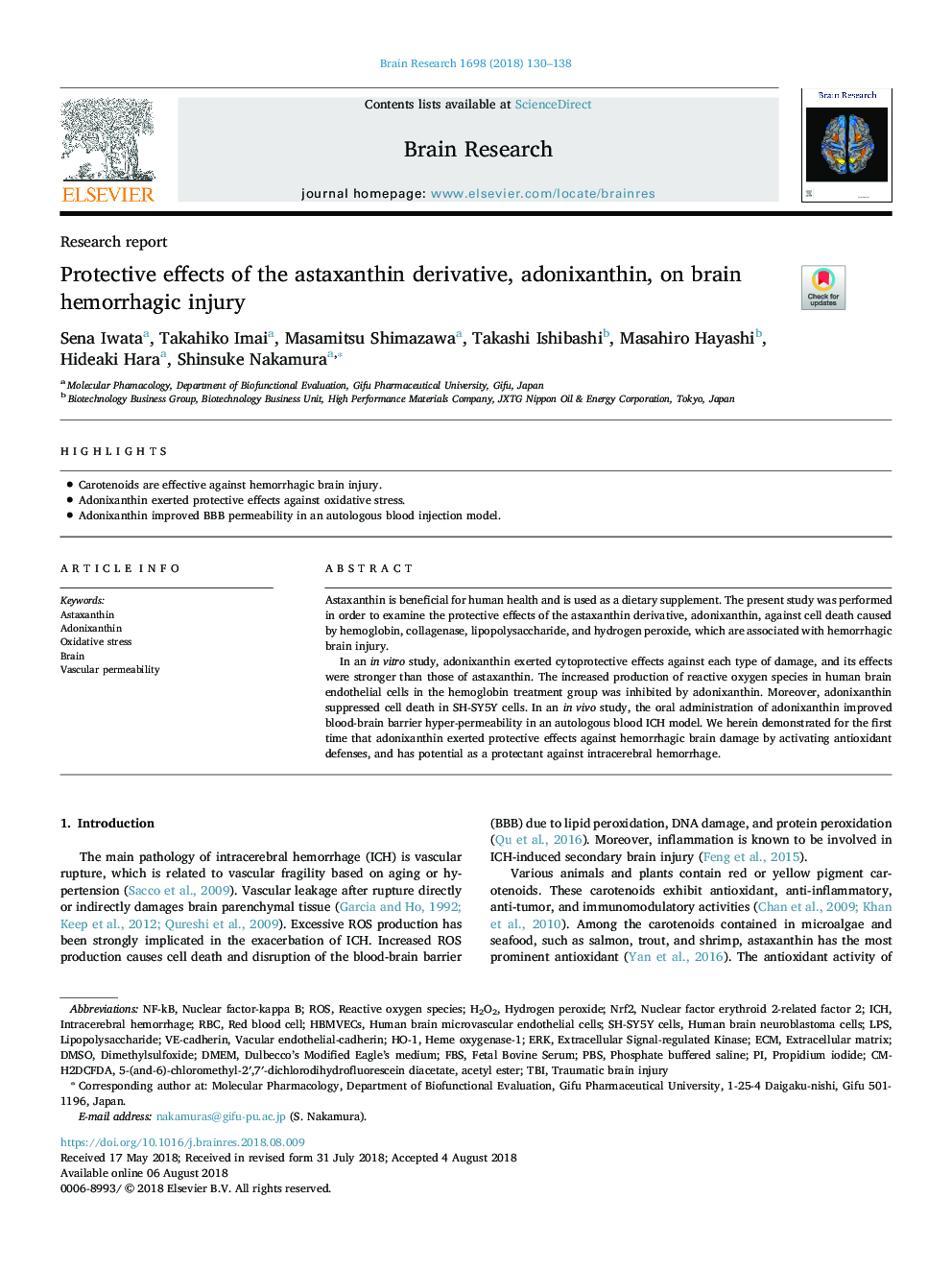| Article ID | Journal | Published Year | Pages | File Type |
|---|---|---|---|---|
| 8839641 | Brain Research | 2018 | 9 Pages |
Abstract
In an in vitro study, adonixanthin exerted cytoprotective effects against each type of damage, and its effects were stronger than those of astaxanthin. The increased production of reactive oxygen species in human brain endothelial cells in the hemoglobin treatment group was inhibited by adonixanthin. Moreover, adonixanthin suppressed cell death in SH-SY5Y cells. In an in vivo study, the oral administration of adonixanthin improved blood-brain barrier hyper-permeability in an autologous blood ICH model. We herein demonstrated for the first time that adonixanthin exerted protective effects against hemorrhagic brain damage by activating antioxidant defenses, and has potential as a protectant against intracerebral hemorrhage.
Keywords
ECMAdonixanthinTBIPBSCM-H2DCFDAHeme oxygenase-1RBCLPSDMEMERKNF-kBFBSHO-1Nrf25-(and-6)-chloromethyl-2′,7′-dichlorodihydrofluorescein diacetate, acetyl esterDMSOROSVE-cadherinHydrogen peroxideAstaxanthinTraumatic brain injuryOxidative stressintracerebral hemorrhageDimethylsulfoxidefetal bovine serumSH-SY5Y cellsHuman brain microvascular endothelial cellsnuclear factor erythroid 2-related factor 2Nuclear factor-kappa BPhosphate buffered salinelipopolysaccharideExtracellular matrixDulbecco’s modified eagle’s mediumBrainICHVascular permeabilityH2O2Propidium iodideextracellular signal-regulated kinasered blood cellReactive oxygen species
Related Topics
Life Sciences
Neuroscience
Neuroscience (General)
Authors
Sena Iwata, Takahiko Imai, Masamitsu Shimazawa, Takashi Ishibashi, Masahiro Hayashi, Hideaki Hara, Shinsuke Nakamura,
